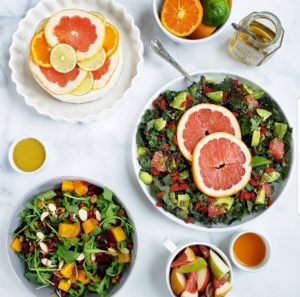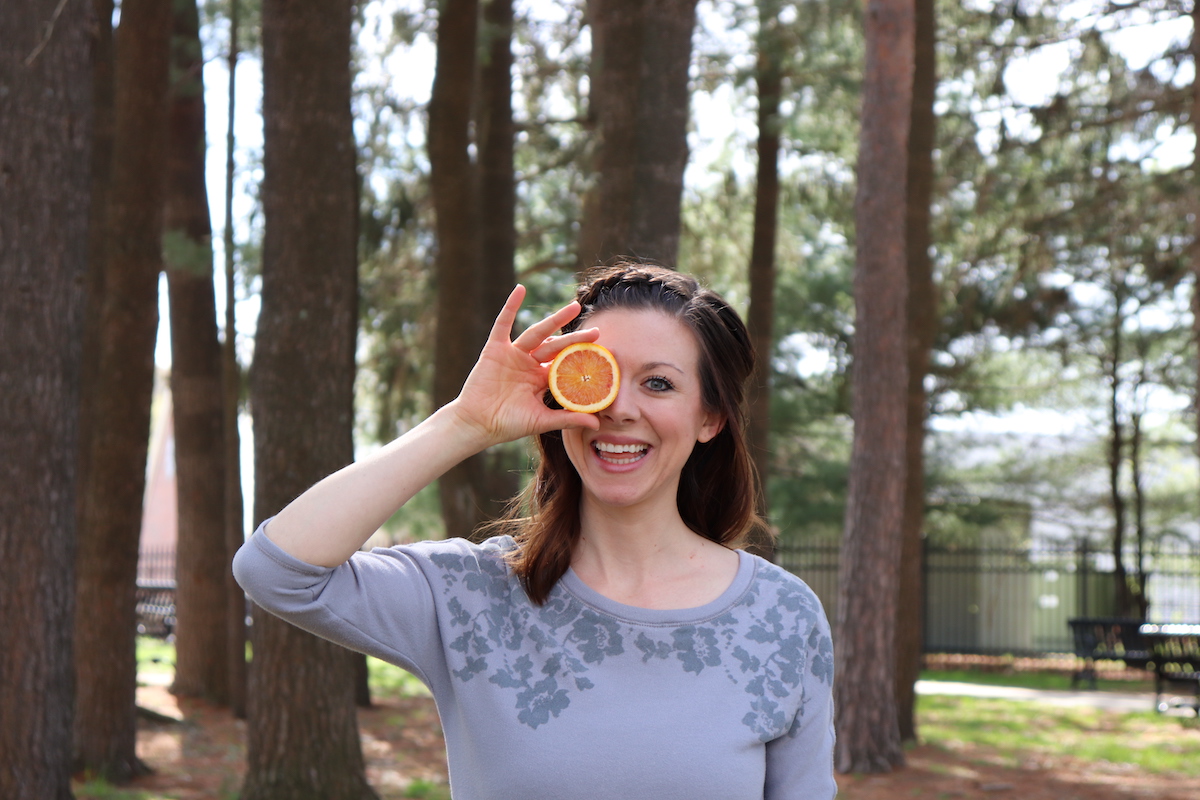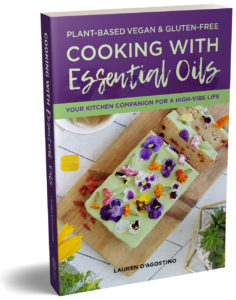You may have heard the hype and excitement around essential oils. They’re pretty amazing. But there are a few important details all holistic health nuts must know about these plant-based treasures before using them in their kitchen.
When shopping for essential oils, it is essential to consider the purity, potency, and how best to utilize each robust flavor.
Each oil is unique and elevates your plant-based cuisine differently.
Here are three things I look for when choosing a brand of essential oils to use in my plant-based recipes as a holistic vegan chef. Spoiler alert: these standards are shared by doTERRA, the only company I trust to deliver consistent and pure essential oils for my culinary creations.

Purity
When I first learned about essential oils back in 2016, I had no idea what I was doing! I was interested in natural modalities but was so confused on how to start. I wasn’t aware that 75% of essential oils available on the market contain synthetic ingredients and are not fit for internal use—which is the best way to enjoy the benefits of essential oils.
Choosing 100% pure essential oils ensures the oil will perform consistently each time you reach for it. It allows our body’s cells to effectively communicate with the plant essence cells (its essential oils) so the oils can affect change on a cellular level and at the root cause of our health challenges.
If the oil isn’t pure, it won’t be as effective. Your body will struggle to process its chemistry (a language barrier of sorts), and you’ll miss out on any noticeable physiological shifts.
Synthetic oils simply aren’t effective.
We turn to essential oils because we want natural support instead of synthetic drugs and chemicals. If you’re reaching for a natural solution, don’t want it to be, well, natural?
Potency
Potency and purity go hand in hand to ensure an essential oil will be effective and safe. If an essential oil isn’t as potent as it should be, both in terms of chemistry and flavor, it won’t have the intended impact on our systems. A commitment to potency is another reason I trust doTERRA.
They source their essential oils responsibly and respect each plant’s need to be grown where it can thrive. Plants grow in specific parts of the world for a reason, right? Oils from happy plants produce better oil.
It’s similar to the difference between a tomato grown in your backyard in the California summer sun and one grown in a greenhouse in snowy Michigan in February…they’re both tomatoes, but the summertime tomato will be much better—naturally.
Providing fair wages, helping communities build infrastructure, and bringing healthcare and schools to struggling areas worldwide are also part of this commitment to sourcing powerful and potent essential oils responsibly and sustainably.
Potency in essential oils and a global mission—that’s so much bigger than just providing great holistic remedies. There’s a reason doTERRA is the number one essential oil trusted worldwide!
Powerful Flavor
We’ve covered the basics of purity and potency. Now let’s dig into the delicious world of cooking with essential oils!
There are five ways I like to use essential oils when I’m cooking:
- Mixed into salt
- Infused into a culinary carrier oil
- Dropped onto a spoon
- Using a toothpick
- Right from the bottle.
Products from doTERRA are so powerful a little goes a long way! Adding them to salt or cooking oil is a great way to spread their flavor over your food.
To start, you may find it useful to drop the essential oil onto a spoon first, just in case more than one drop comes out. From the spoon, you can add the oil to the dish. Typically a half drop that will release from the edge of the spoon.
The toothpick method works well for very potent oils such as oregano, clove, lavender, or cinnamon bark.
Here’s how:
Insert a clean toothpick into the center orifice of the bottle. Remove it and swirl the toothpick into the food. This method works well with drinks, marinades, sauces, soups, and dressings. To add more flavor, repeat the process with a clean toothpick each time.
And of course, you can add essential oil into food right from the bottle! With a little practice and you’ll be flavoring your food like a holistic pro in no time!
A quick note on food storage:
It is essential to use glass, stainless steel, or ceramic containers when cooking with essential oils and especially when storing your food. Essential oils are so potent they will begin to break down most plastics and can draw the chemicals from the plastic into the food.
But by all means, store your leftovers!
The essence of the oil gets stronger as it sits. So add wisely, and remember less is more. When baking with the essential oil, or when exposed to heat, some of the flavor will be lost.
If cooking with essential oils is new to you, you may be wondering which recipes would be good to try first. Look no further than my first cookbook, “Plant-Based Vegan & Gluten-Free Cooking with Essential Oils,” available on Amazon.
It’s a beautiful and educational guide designed to spark creativity in your kitchen, and inspire a delicious shift to plant-based living. The recipes are as practical and versatile as they are delicious.
Thai Hummus Recipe Featuring Essential Oils
To help get you started, try the recipe below and taste for yourself how flavorful, convenient, and fun it is to incorporate essential oils into your cooking!
This Thai hummus recipe makes a great sandwich spread, salad topper, or snack you can eat with a spoon!
Thai hummus
2 15-oz cans chickpeas, drained + rinsed
2 T red curry paste
1 T tahini
1 t salt
1 T turmeric powder
1 t lemon juice
1-2 T good quality olive oil
1 drop each Lemongrass, Cilantro, Ginger essential oils
Use a food processor to mix well, adding the oils in the last few seconds of blending.
Here’s a link if you need to order any doTERRA essential oils.












Join the GloWell Community on Social!
Don't risk missing a single thing. Follow us on social and become part of the GloWell community.